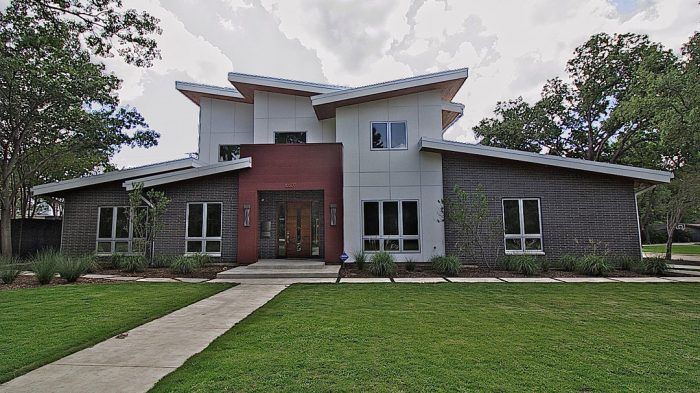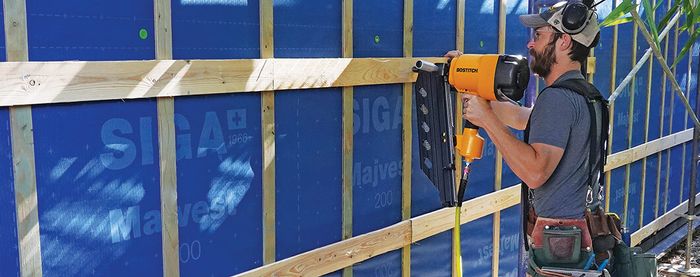Every New Home Should be Zero-Energy Ready
A longtime advocate for green building design makes a case for the Zero Energy Ready Home label.

By BEVERLY SMIRNIS
Reprinted with permission from Dallas/Fort Worth Building Savvy Magazine.
A desire to design and build better homes led Armando Cobo, designer, to help develop the LEED for Homes and NAHB Green Building programs and advocate for local, state, and national green building codes. Then, when the Department of Energy developed the Zero Energy Ready Home (ZERH) program in 2008, Armando became a DOE-approved instructor and started educating builders and clients on the advantages and processes to design and build the homes of the future.
With more than 30 years of experience in designing homes and the past 20 years spent establishing a specialty in designing high-performing homes, Armando is a staunch believer in the ZERH program. “It’s a timely solution for differentiating a builder’s product from existing homes and setting apart their homes from others that merely meet minimum code requirements,” he says. “The DOE’s Zero Energy Ready Home label symbolizes homes that are so energy-efficient that most or all of the extra cost for building the home with renewable energy systems is offset by savings in annual energy consumption,” he explains.
The DOE program builds upon the comprehensive building science requirements of Energy Star for Homes Version 3.1, along with proven Building America innovations and best practices. Other special attribute programs are incorporated to help builders reach unparalleled levels of performance and homes designed to last hundreds of years. Armando adds that less than 1% of U.S. builders qualify to build homes to this level of quality and high performance.
Substantially better than code
A DOE Zero Energy Ready Home is a home that meets all of the ZERH criteria and is verified by a qualified third-party entity. All homes are at least 45% more energy-efficient than a typical home built to standard new home code. “This generally corresponds to a Home Energy Rating System (HERS) Index Score in the low 50s, depending on the size of the home and region in which it is built,” Armando explained.
After working for years with LEED for Homes and NAHB Green, Armando prefers the ZERH program because it allows builders to be more independent in their way of building homes. “They simply achieve the requirements for the ZERH home program. There are no points to count and no army of consultants required other than the HERS rater and verifier,” he said.
In order to qualify and build a ZERH, Armando provides his clients with a full set of detailed drawings and specifications to build homes designed with very low utility and maintenance costs in mind. But his involvement in the building process doesn’t stop there. He coordinates the truss layout and design with manufacturers and often puts his native Spanish language to task in training framers on the job site. He works closely with the HVAC contractor and energy rater assigned to each project, both during the design and construction process. The amazing results speak for themselves.
In the past 15 years, all the homes that Armando has designed have received HERS ratings of less than 45. His design goals also strive to achieve one air change per hour when tested at 50 pascals of pressure (1ach50). Compare that to the local jurisdictions’ adaption of the state energy code in Climate 3, which includes North Texas; they allow up to 5 ach50, which Armando argues is ridiculously lax.
Further, Armando’s successful design formula calls for just one ton of HVAC system per 1200 to 1500 square feet. “It is still not uncommon to find central air conditioners in residences that are far larger than needed to meet the load requirements,” he said. “When you’re significantly improving the house envelope and efficiency of the distribution system, you reduce the necessary heating and cooling loads. Proper sizing of the AC can be a cost-saver and most importantly allows more efficient operation and provides a more comfortable environment.”
And what about solar, we ask? Armando says the combination of a good conservation approach, with envelope efficiency, Energy Star lighting, appliances, and hot water distribution, produce such a low energy demand that, if the client wishes, they could install a much smaller and more reasonable photovoltaic system with a great return on investment.
Last October at the Energy and Environmental Building Alliance (EEBA) Conference in Atlanta, Armando’s client, Thornhill Custom Homes, earned honors for a project at 5717 Preston Haven in Dallas. Thornhill was selected as a 2017 Housing Innovation Award winner in the custom spec category. Armando says he expects two other builders to compete for the award in 2018 and more in 2019, based on projects currently under construction.
No cost to join program
Armando stresses that it is free for builders to become a ZERH program partner. All a builder needs to do is to register online by completing their contact information, uploading a company logo, and making some additional commitments. Once the builder has provided an electronic signature and submitted the registration, the DOE sends them a confirmation by email with their password to access their account. The next logical step might be to contact Armando, but he stresses that everyone should truly care about building a structure to the very best standards, and anyone who does can easily understand and meet the requirements of the program — with or without his direct supervision.
The ZERH program mandatory requirements stipulate:
- Homes must be certified under Energy Star version 3.1.
- Envelopes shall meet or exceed Energy Star requirements for 2015 IECC.
- Grade 1 insulation installation and airtightness of 2.5 ach50 or less.
- Window U-factors less than 0.3 with a solar heat gain coefficient of less than .25.
- Duct systems must be located inside the conditioned space or optimized to comparable performance in a ventilated space (encapsulated or double-wrapped).
- Minimum efficiencies in HVAC systems and ASHRAE 62.2 whole-house mechanical ventilation system.
- Hot water delivery shall meet efficient requirements.
- Indoor air quality certified under EPA Indoor AirPLUS.
- Renewable-ready checklist must be completed.
Builders and homeowners can learn more about the DOE Zero Energy Ready Home by joining Armando at a teaching event or jobsite tour, taking part in online training and webinars, and browsing the ZERH program’s other resources. The program includes free ready-to-use marketing materials to promote consumer awareness of homes that feature high-performance products in their most effective applications. “I urge you to take advantage of the opportunity to be among the one percent of builders in the country by starting to build the homes of the future today,” Armando concludes.
Originally published on GreenBuildingAdvisor.com. All photos: Armando Cobo. Armando Cobo is a home designer in Albuquerque, New Mexico, and Frisco, Texas, with more than 30 years of experience and 450 sustainable custom home designs to his credit. You can learn more about Armando and his work at his website.

